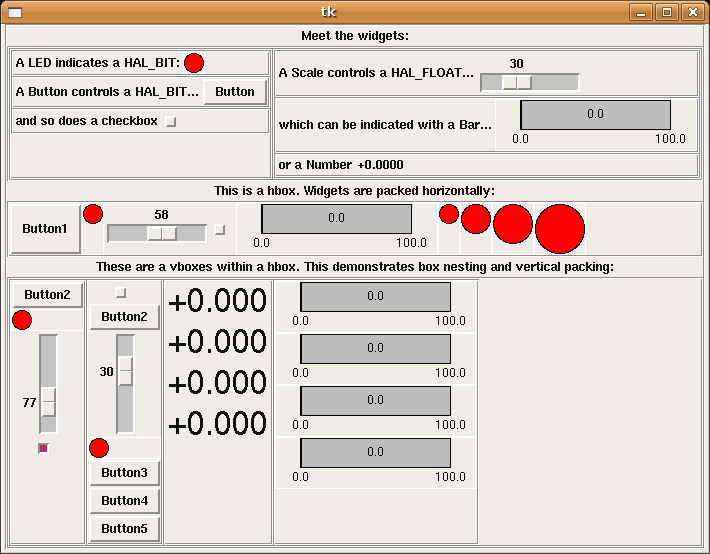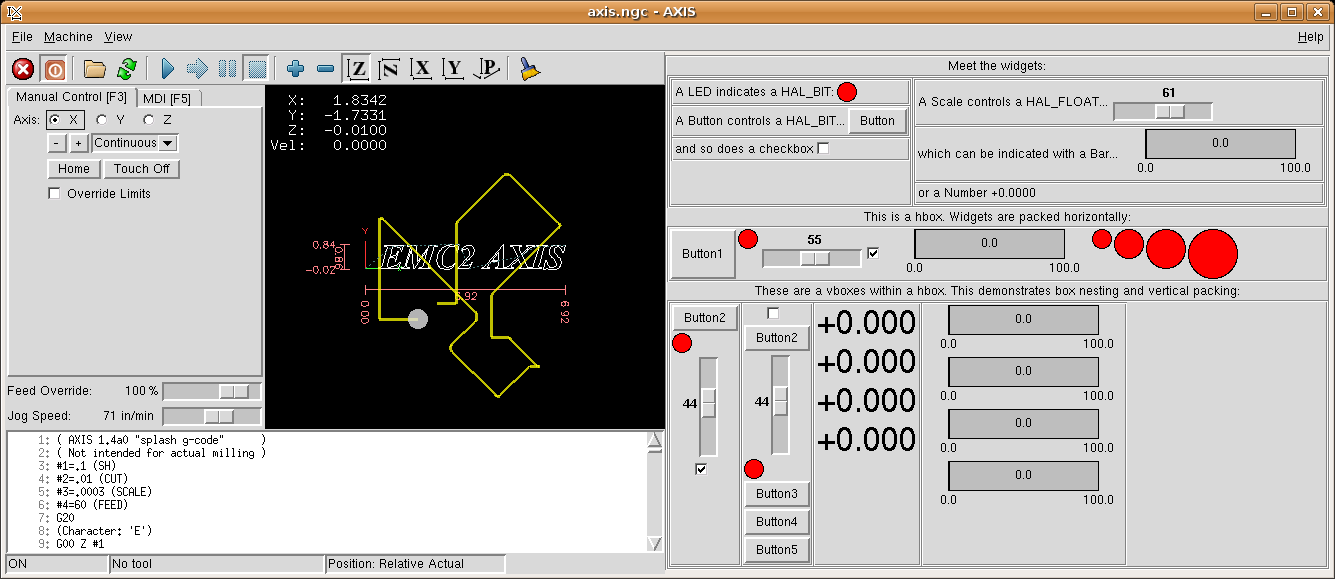Vital systems seem to have reintroduced the Motenc-Lite PCI 4-axis servo card, now at a cheaper price of $249
Category: EMC
More pyVCP Widgets
Since last Monday, I've been adding to the range of available pyVCP widgets:
Spinbox:

Jeff Epler suggested that my initial 'jognumber' would be better implemented with a Tkinter spinbox. It sets the value of a FLOAT by either pressing the up and down arrows, or using the mouse-wheel.
Radiobutton:

This widget creates a number of BIT pins and sets only one of them, corresponding to the checked box, true.
Jogwheel:
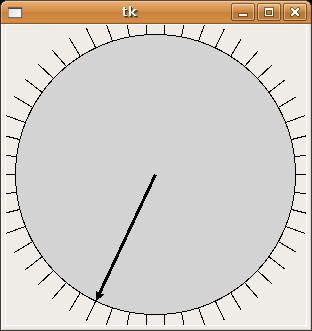
This resembles a real jog-wheel, and outputs a FLOAT count corresponding to the position of the wheel. The wheel rotates either by dragging with the mouse, or by rolling with the mouse-wheel. The number of counts is adjustable, 50 cpr shown in the pic I think. This will be useful for debugging jogwheel code to be used with real jogwheels, but could also find other use in pyvcp panels.
Meter:
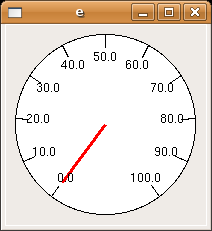
A traditional dial-indicator, used for displaying a FLOAT. The start and end values are user-configurable.
Extending AXIS with pyVCP
Maybe the most popular GUI for EMC is called AXIS. It shows a number of useful buttons, the 3D view, G-code file view etc. But depending on machine configuration and hardware, users might want to display different things on the screen and have customized controls. There's been some previous work on virtual control panels, or VCP. That was done in C using GTK widgets which I am not at all familiar with... I really want this kind of control panel for the new mill setup, so I've put together two Python programs that create Tkinter widgets that are connected to HAL pins. I call it pyVCP (Python Virtual Control Panel). Here's the first test from yesterday:
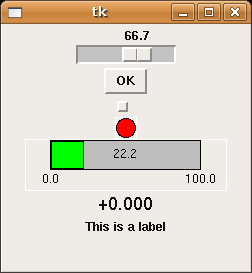
The uppermost widget is a slider that controls a HAL_FLOAT. Next is a button which sets a HAL_BIT true when pressed. The small rectangle is a checkbutton, which stays down when pressed, also for controlling a HAL_BIT. The status of a bit can be shown with a LED (red circle). HAL_FLOAT values can be indicated either by bars (green), or as a number.
To enable users to individually configure their extra bells and whistles it makes sense to have a text file that describes the panel setup. The easiest way I found to read and write structured data in Python was XML. Here I've used a number of the different widgets and ways to pack them to demonstrate what's possible:
Finally the best part. Since AXIS is also written in Python/Tkinter, AXIS author Jeff Epler was quickly able to integrate my work with the current AXIS, so you can have your custom control panel right next to the familiar view:
There's a bit more (including source files) in the EMC Wiki, and the latest versions are committed to CVS.
Jogging EMC2
One part of our continuing CNC-mill upgrade is to connect a jog-pendant to the mill which will enable jogging and some other manual controls in EMC2. Here are some pictures and notes of the present status.
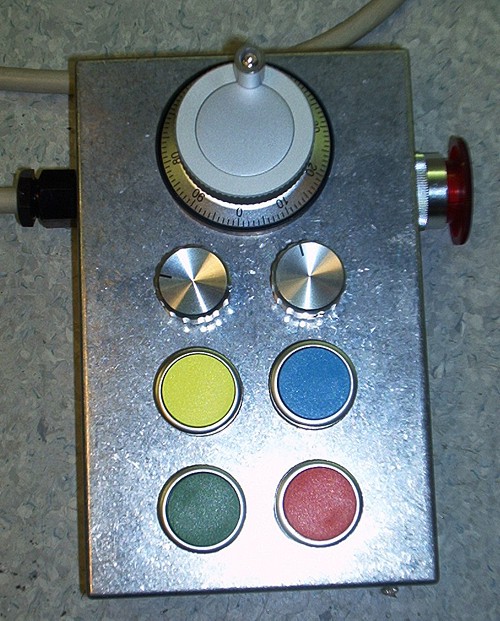
Optoisolator cards for Mesa 5i20 servocard
By popular demand, here are the schematics and pcb layouts for the optoisolator cards I made for use with the Mesa Electronics 5i20 servocard.

